So you have something valuable in your building that you want to protect, like children at a daycare or the entrance to a federal building, yet you want to be able to enjoy the beautiful sunshine and views of the outdoors, what do you do? Thankfully, there are decades of research and many manufactures out there that are able to provide you with products that can provide you a security solution for such a case.
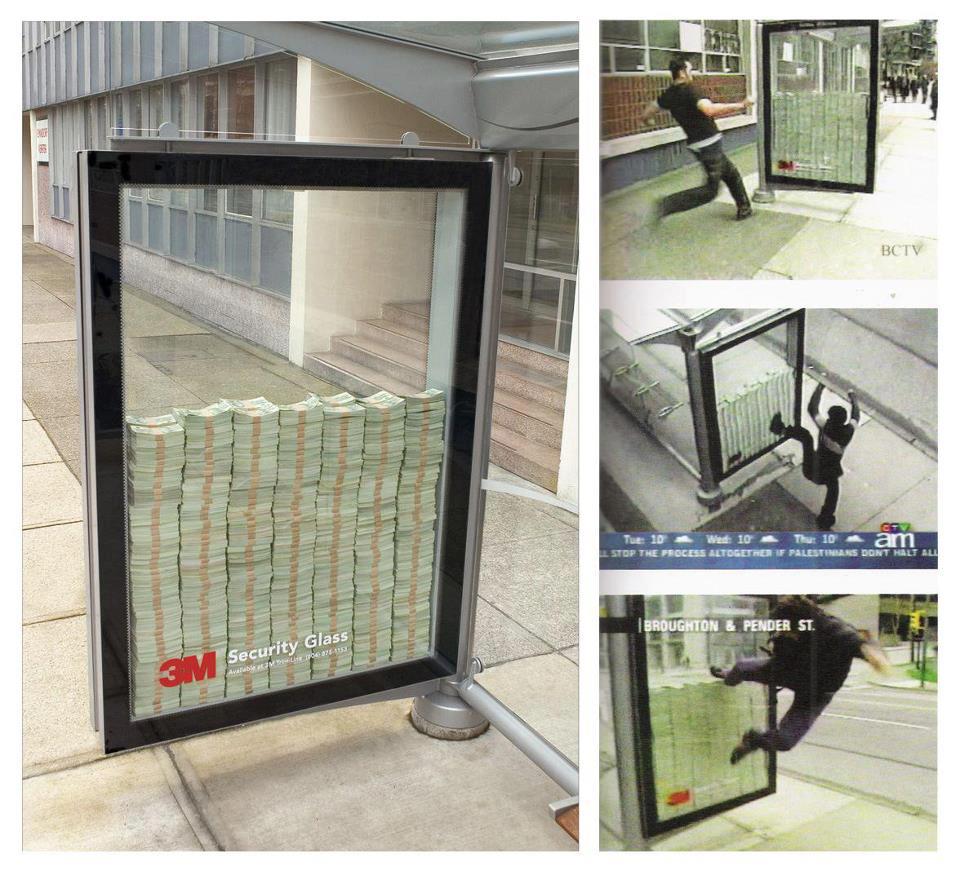 Figure 1: 3M put money inside a bus stop partition in Vancouver, Canada to prove their security glass could withstand nearly any attack by an unarmed person. If anyone could break the glass, they got the money. No one broke the glass.
Figure 1: 3M put money inside a bus stop partition in Vancouver, Canada to prove their security glass could withstand nearly any attack by an unarmed person. If anyone could break the glass, they got the money. No one broke the glass.
To tackle this problem, the first real question you have to ask is “what am I protecting against?” Are you trying to protect against a guy with a hammer breaking through your window, an active shooter, falling ice. The gamut is nearly limitless but needs to be defined early on in the decisions making process. Until you narrow that down, the options, and cost, are boundless. If you are trying to stop a burglar, that can be accomplished without too much trouble. If you are trying to stop an active shooter, or are looking for “blast protection”, things get complicated quickly.
The chart below lays out the major categories of protected glazing and potential materials that will accomplish that: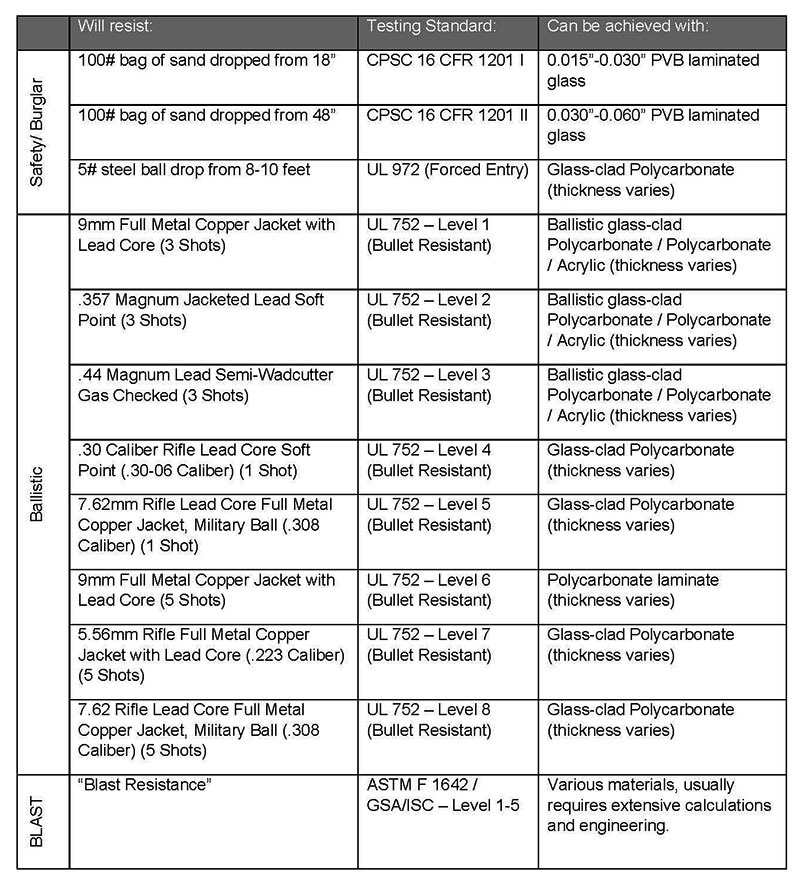 Now if that table with all of those options looks confusing, it is. The worst part is that depending on manufacturer, one might make a glass-clad polycarbonate that is UL 752 level 3 rated that is ½” thick, where another might make the same apparent product that is ¾” thick. So how do you choose? It all comes down to what you are trying to protect against, and how important the aesthetic is. Even though many products pass the specific UL or ASTM testing requirements, they often vary in thickness, color, and physical make up and thus may not be suitable depending on the application.
Now if that table with all of those options looks confusing, it is. The worst part is that depending on manufacturer, one might make a glass-clad polycarbonate that is UL 752 level 3 rated that is ½” thick, where another might make the same apparent product that is ¾” thick. So how do you choose? It all comes down to what you are trying to protect against, and how important the aesthetic is. Even though many products pass the specific UL or ASTM testing requirements, they often vary in thickness, color, and physical make up and thus may not be suitable depending on the application.
Once a decision is made on what level of security you want and what type of material you want, you then have to struggle with how to secure this very expensive, but very dependable piece of glazing into place. Depending on the material and the manufacturer, you can use a captured system like a storefront or curtainwall system, you can use a custom designed steel framing system with glazing channels, or you might even be able to use mechanical fasteners to anchor through the material depending on its composition. The real factor in choosing the right framing system is the frame’s ability to withstand the kinetic energy distributed to it by the burglar / bullet / blast. Selecting the right frame typically requires engineering calculations and/or consulting a specific manufacturer to select a pre-engineered system.
If all of this sounds rather complicated, it’s because it is. NKB has done multiple projects where the design necessitated that some form of transparent security be provided, and each time we go through answering all of these questions in order to choose the right solution. Transparent security is a building component that requires special attention to detail and to ensure the right outcome. Do not just pick a product off the shelf when dealing with such complex problems, consult a design professional; broken glass in this case is a lot more dangerous than just a sharp edge.
N.K. BHANDARI is pleased to announce it has recently received the Federal Aviation Administration (FAA) Certificate of Waiver or Authorization (COA) and a Section 333 Grant of Exemption allowing the firm complete use of Unmanned Aerial Vehicles (UAV’s) for commercial use. This added capability allows NKB to provide an expanded set of services to our clients while also ensuring greater safety for the public, our clients, and our employees.
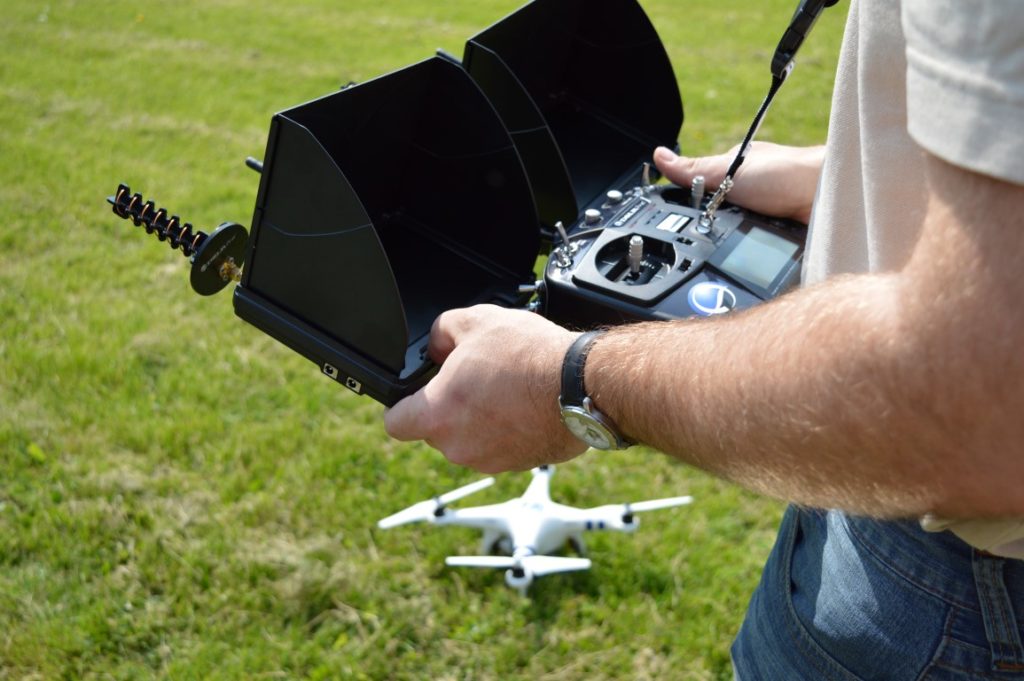
Through the use of our UAV technology, we are able to perform visual inspections of various types for structures including building facades, roofs, towers, bridges in both high definition still images, and 4K video in both the visual and infrared spectrums. Utilizing our DJI Phantom quad-copter UAV and automatic waypoint navigation, we are also able to provide terrain mapping services through photogrammetry. These technologies provide us with a set of files which can be utilized in our design platform software to create existing condition drawings and to obtain a topographical representation of any property with greater ease than was previously possible.

At N.K. BHANDARI, we embrace the use of technology to deliver a higher level of service as Architects and Engineers. By welcoming this technology, we are positioning ourselves at the leading edge of the design community. Through compliance with current FAA regulations relating to the usage of UAV’s we are able to provide a heightened level of peace of mind for our clients. All of our clients know that NKB not only works within the existing regulatory framework, but we also maintain all required insurances and operator training to ensure the highest level of client, employee, operator, and most importantly, public safety during our UAV operations.
NKB is excited to continue to lead by example by embracing and utilizing leading edge technology such as unmanned aerial vehicles with visual and infrared sensors to deliver unique results through unrivaled service.
N.K. BHANDARI is pleased to announce that it is the recipient of the 2016 Small Business Administration Excellence Award as nominated by the Onondaga Small Business Development Center. All of us at NKB are both humbled and honored by this recognition from the SBA. Honored because of who we are as a firm and what we have accomplished. At the same time we are humbled, because there are so many who should receive this honor with us.
There are so many we are fortunate enough to work with day-in-and-day-out that should be recognized more than us. These team members include every one of our clients, our design team sub-consultants, our business partners, the Small Business Development Center, the Small Business Administration, the former leadership of the firm (Narindar Bhandari and Jim Resig), and every employee of N.K. BHANDARI.
To all of the organizations and individuals who we are fortunate enough to call part of the NKB team, we extend our heart-felt thanks and expression of gratitude for honoring us with your gift, talents, and abilities in support of the firm. Thank you.
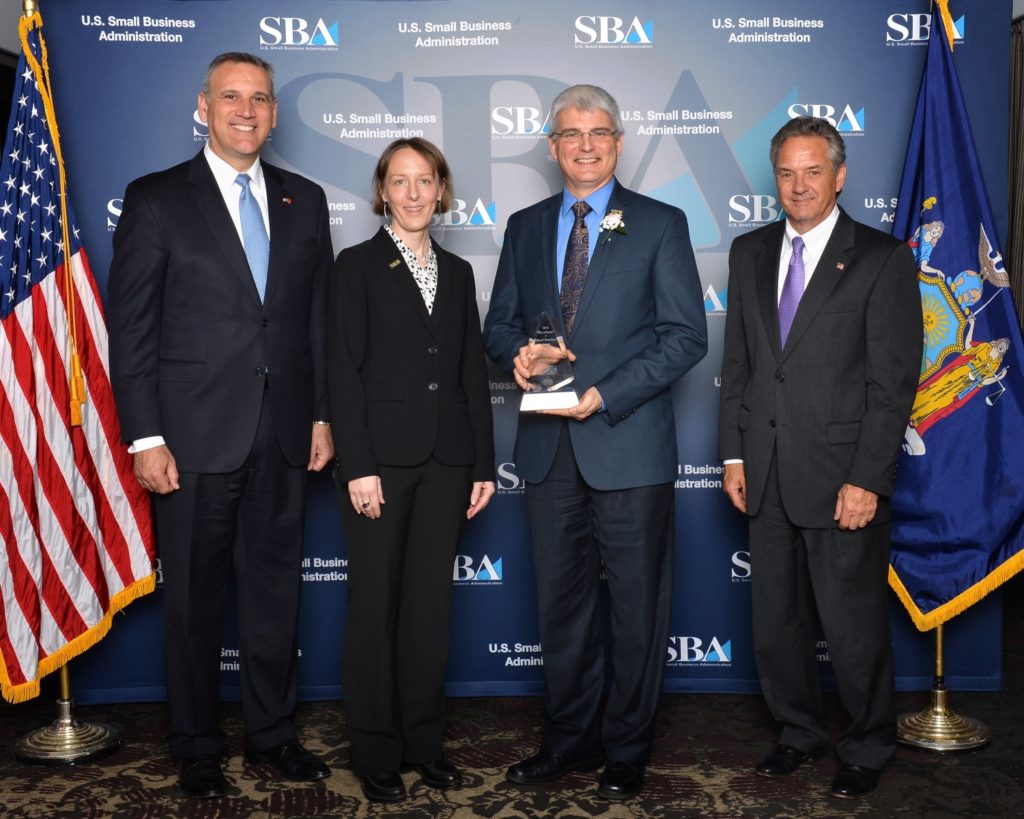
Photo from the Small Business Excellence Awards luncheon on May 6, 2016. From left to right: James Conroy, NYBDC | Karen Livingston, NY SBDC Onondaga | Chris Resig, N.K. BHANDARI, Architecture & Engineering, P.C. | Bernard J. Paprocki, SBA

Scott Girouard – Spring Intern 2016
The opportunity to work simultaneously alongside architects and engineers was something I knew I wanted as I entered Syracuse University. I enjoyed seeing the two disciplines build off one another in a responsive manner.
For this reason, I chose to major in Civil Engineering and minor in Architecture. This unique, yet practical degree combination further interested me in how closely the two disciplines could function with respect to one another.
An opportunity to work collaboratively or simultaneously with engineers and architects had managed to elude me even as I entered my senior year. Unsuccessful previous attempts included working on a student architectural competition team, a design-build project, and inquiring about research pertaining to engineering and architecture collaboration efforts.
My internship at NKB came as I shifted my focus to design opportunities outside of SU. Upon my first glimpse of the NKB office I knew I was in the right place. The mostly open space allows me to easily ask engineers and architects any questions I may have.
What I did not know going into NKB was the range of exciting building types that I would soon be exposed to. NKB’s varied project types have allowed me to finally put my engineering and architecture education into practice. Whether it be through working on proposals, doing structural analysis, or working on Revit models, I am always learning something new.

Jackson Honis – Spring Intern 2016
The project experience at NKB has already paid off in both my engineering and architecture coursework. My exposure to varied structural systems at NKB has allowed me to understand the reasoning for different building systems. In return this has allowed me to approach my structural steel senior design project with confidence.
The dynamic environment at NKB also means that I can regularly practice and build on my architectural knowledge. The opportunity to work on real projects has provided me with a new means to practice my Revit skills and technical building knowledge.
The idea of gaining professional practice in a supportive and inspiring environment is one that I could not recommend more highly to students like myself. The exposure to real building projects at NKB leaves me excited to learn more about the fields of engineering and architecture.
-Scott Girouard
![By Orietta.sberla (Own work) [CC BY-SA 3.0 (http://creativecommons.org/licenses/by-sa/3.0)], via Wikimedia Commons](https://upload.wikimedia.org/wikipedia/commons/7/7a/Ethics049webIV.jpg) One of the current buzz words in the business world is “business ethics” or “corporate ethics”. My assertion is that there is no such thing as business ethics or corporate ethics. The term business ethics implies that there are ethics in the business world and ethics outside the business world, assuming that people act one way at work and a different way at home. This is nonsense. When it comes to ethics, a person or organization either has them or they don’t. It is not compartmentalized into different portions of their corporate or personal lives. There are no business ethics, only ethics. These ethics are personified by the Integrity of the individuals who form the business in which they work day-in-and-day-out.
One of the current buzz words in the business world is “business ethics” or “corporate ethics”. My assertion is that there is no such thing as business ethics or corporate ethics. The term business ethics implies that there are ethics in the business world and ethics outside the business world, assuming that people act one way at work and a different way at home. This is nonsense. When it comes to ethics, a person or organization either has them or they don’t. It is not compartmentalized into different portions of their corporate or personal lives. There are no business ethics, only ethics. These ethics are personified by the Integrity of the individuals who form the business in which they work day-in-and-day-out.
The character trait of Integrity is where the essence of ethics can be found. While I do not disagree with the Merriam-Webster Dictionary definition of Integrity, which can be summarized as a quality that is incorruptible, sound, or complete; I do not believe this definition goes far enough. Integrity is inseparable from the very character of the individuals who comprise every business with no regard for type. Integrity is not a quality that someone has; it is a quality that someone is. Integrity is the very nature of who we are and what we do day-in-and-day-out, whether it is at work or home. Integrity is not a marketing campaign or a catchy slogan meant to garner comfort from our clients, stakeholders, or strategic partners; it is the essence of who we are. I believe Integrity is exemplified in the following ways:
Integrity is being Trustworthy.
Integrity demands a trustworthiness in all that we do. Our efforts are to result in dependable, reliable processes and outcomes. When Integrity is exemplified, consistent results are created produced and delivered. Integrity creates strength and structure in the individual and in the firm.
Integrity is having Open and Honest dialog.
Integrity necessitates the need for open and honest discussions in every facet of our day. Our intentions must be clear; confusing situations are removed through transparent exploration together. Integrity gives rise to the highest level of collaboration which unites all stakeholders in the same process. Integrity creates kinship and empathy in the individual and in the firm.
Integrity is being Candid, Authentic and Straightforward.
Integrity fosters the highest level of listening to and understanding of others; prompting honest communication without presumption. It is following through with promised intention, which builds confidence in everyone you come in contact with. Integrity creates mutual trust and loyalty in the individual and in the firm.
The very fabric of who we are as individuals becomes the essence of the organization in which we work every day. I am sorry, “business ethics” is a misnomer; it is simply ethics; it is our Integrity. A supremely simple concept, yet the very corner stone of who each of us is in our personal and corporate lives.
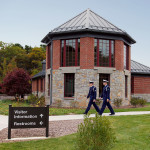 When in need of a licensed professional, you seek out those on whom you can implicitly rely, that have the requisite experience and expertise, as well as references, to help you resolve your current challenge. Looking for a “subject matter” expert means searching for someone who is at the top of their game. Through a short series of posts, I’ll share some of my ideas on what it’s like being a professional, and how the concepts of being “Thorough, Accountable and Reliable” factor into what professionalism can and should be.
When in need of a licensed professional, you seek out those on whom you can implicitly rely, that have the requisite experience and expertise, as well as references, to help you resolve your current challenge. Looking for a “subject matter” expert means searching for someone who is at the top of their game. Through a short series of posts, I’ll share some of my ideas on what it’s like being a professional, and how the concepts of being “Thorough, Accountable and Reliable” factor into what professionalism can and should be.
- Observe & Learn – Knowing what the priorities are and understanding differences between time-wasting procedures and truly important work is part of what makes you become thorough. Committing the requisite time needed right from the start may seem laborious or counterproductive, but it’s not until you understand this concept that your foundation for thoroughness will become strong.
- Technology – Smartphone apps, trending business techniques, and computer programs are frequently developed promising better organization and productivity. However, our reliance on them can lead to losing our focus, giving us a false sense of being productive. How often have we been more impressed with obtaining a newer or updated app or software tool than actually rolling up our sleeves and tackling the issue we were hired to resolve?
- Be Open to Change – (and to changing yourself) It’s okay to pursue known paths for your knowledge-base; but some of the best learned things happen by pushing yourself to figure out what you’re passionate about, and shifting your career closer to those things.
- Become a Learner – There are so many professionals I know who have just stop trying new things. Or those that preach about how things have always been done for the last umpteen years and don’t need to change. Broaden your horizons.
- Build a Strong Network – Congrats to you if you have a robust network within your firm; but you’d do well to also have a large, diverse and strong network outside of your firm. There’s always something more urgent to do than developing this; but having another outlet to tap into when questions arise that you don’t know the answer is a tremendous asset.
- Checks and Balances – Thoroughness involves others – like having a second or third set of eyes review your information. Also, consider how other team members may be affected by the decisions you will be making. Gathering all of this input will provide much clearer information with which to make intelligent decisions.
- Keep Skills Current – Learn to expand your vocabulary of skills, keep marketing abilities up-to-date by volunteering time at a non-profit. Recognize, measure and identify what technical expertise you are lacking and discover simple ways to acquire them.
- Confront Mistakes – We all make mistakes; no one is perfect. We want to do our very best, but everyone falls short at times. These are just the facts of life and we should understand and be okay with that. What’s more important is how you deal with your mistakes. Be upfront and address problems right away. Be flexible and nimble enough to know what you don’t know and admit it. Your clients would rather hear honesty than excuses.
- And finally, Take Responsibility – Own up to mistakes and make them right. Then, figure out what happened so it can be prevented in the future. This idea of responsibility, or accountability, is something that will be discussed in the next post of this series.
The following are words of wisdom my father-in-law instilled in me: “A Job Well Begun is a Job Half Done”. Spending the requisite time being thorough from the start provides you more time during your productivity. If you know you’ve conducted the right research and asked the right questions, then you won’t flounder during the actual work or have to circle back to re-do what you’ve already done, because you didn’t have all the facts. Your thoroughness, and thus your professionalism, imbues a level of trust and confidence in others. Like an attorney trying a case, you must meticulously research and gather all the evidence needed to make your argument – before going to court and winning!
I am an architect. I have risen through the ranks, worked for various firms, own my firm and through my career have developed my own parameter for quality in the field of architecture and that is: Quality is defined by the client not self-proclaimed by the design professional. When most people consider Quality, they think of a product that is without defect or a product that serves its intended purpose. In my career, Quality is far more than that, it is also the service perceived by the client.
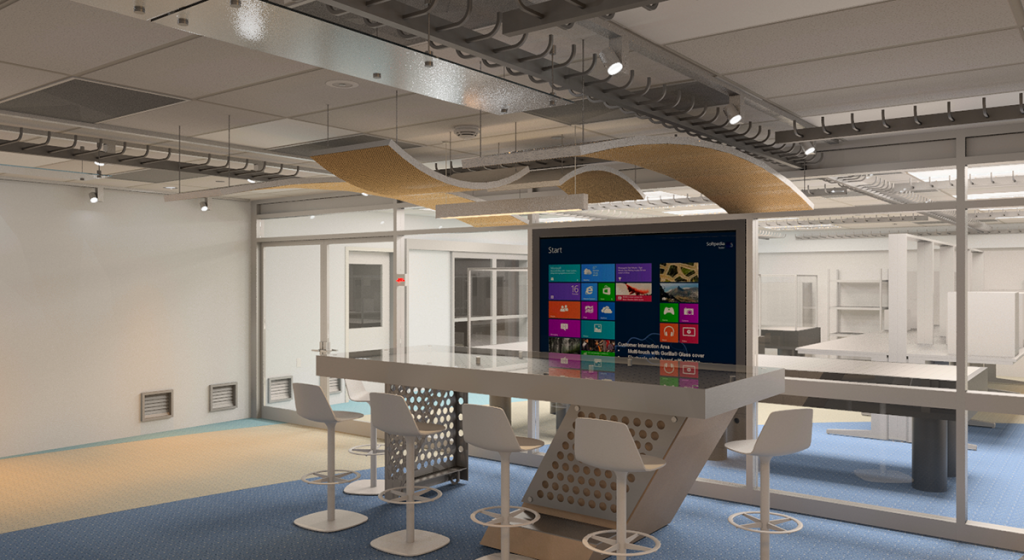
Therefore, I have come to the conclusion that Quality as defined by service cannot be attained unless each of these factors are achieved in the client’s eyes.
- Collaboration through meaningful participation from all project team members and stakeholders (both client & design professional).
- Stability by satisfying the demands of scope, schedule, and budget and keeping them in balance without one becoming excessive to the detriment of the others.
- Creativity: The design process brings into existence what was not yet known. It takes real creativity to insert a not-yet-formulated design concept into the design process without disrupting a stable and collaborative project environment. For me, the creative process of inserting what is not yet designed into the design process is the true worth of a design professional; requiring careful attention to detail and the utmost of service for the client.
When Collaboration, Stability, and Creativity are achieved to the client’s satisfaction, then and only then, is Quality achieved.

